Question:
How does the calculation of the moments of inertia differ when the cross-section consists of several unconnected or connected partial cross-sections?
Answer:
If the cross-section consists of several unconnected partial sections, the sum of the moments of inertia is calculated without the parallel axis theorem components. The cross-section shown in Image 01 consists of two angle sections that are not connected to each other.
The individual angle sections have the following moments of inertia:
I-y,1,2 = 180.39 cm4 (referred to the centroidal axes y, z)
I-z,1,2 = 65.05 cm4 (referred to the centroidal axes y, z)
The moments of inertia of the entire cross-section result in:
I-y,1+2 = 2 ⋅ I-y,1,2 = 2 ⋅ 180.39 = 360.78 cm4 (referred to the centroidal axes y, z)
I-z,1+2 = 2 ⋅ I-z,1,2 = 2 ⋅ 65.05 = 130.11 cm4 (referred to the centroidal axes y, z)
If the cross-section consists of several connected partial sections, the sum of the moments of inertia is calculated with the parallel axis theorem components. The cross-section shown in Image 02 consists of two connected angle sections.
The individual angle sections have the following cross-section properties:
A-1,2 = 16.25 cm2
y-S,0,1,2 = ±2.30 cm (referred to the zero point)
z-S,0,1,2 = 3.07 cm (referred to the zero point)
I-y,1,2 = 180.39 cm4 (referred to the centroidal axes y, z)
I-z,1,2 = 65.05 cm4 (referred to the centroidal axes y, z)
The cross-section properties of the entire cross-section result in:
y-S,0,1+2 = 0.00 cm (referred to the zero point)
z-S,0,1+2 = 3.07 cm (referred to the zero point)
I-y,1+2 = 2 ⋅ I-y,1,2 + 2 ⋅ A-1,2 ⋅ (z-S,0,1,2 - z-S,0,1+2)2
Iy,1+2 = 2 ⋅ 180.39 + 2 ⋅ 16.25 ⋅ (3.07 - 3.07)2 = 360.78 cm4 (referred to the centroidal axes y, z)
I-z,1+2 = 2 ⋅ I-z,1,2 + 2 ⋅ A-1,2 ⋅ (y-S,0,1,2 - y-S,0,1+2)2
I-z,1+2 = 2 ⋅ 65.05 + 2 ⋅ 16.25 ⋅ (2.30 - 0.00) 2 = 301.46 cm4 (referred to the centroidal axes y, z)
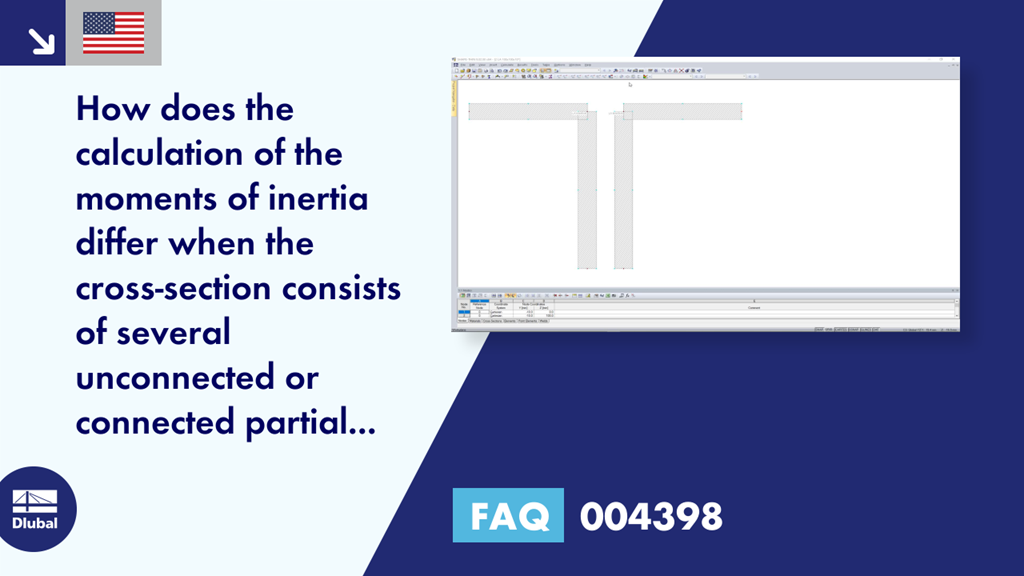
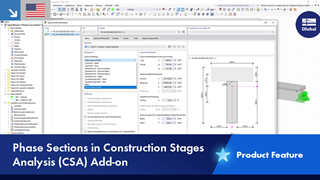


































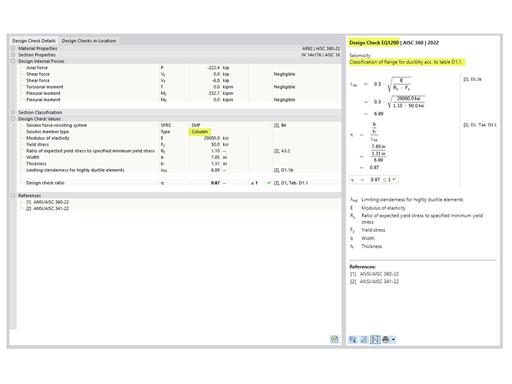
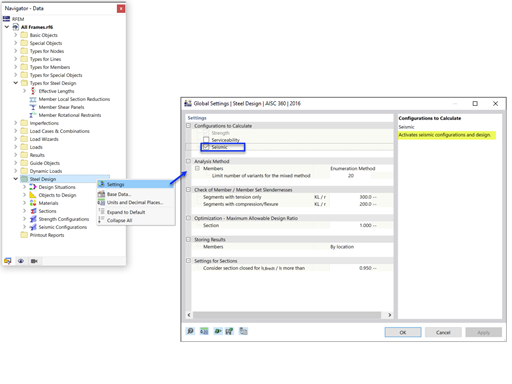
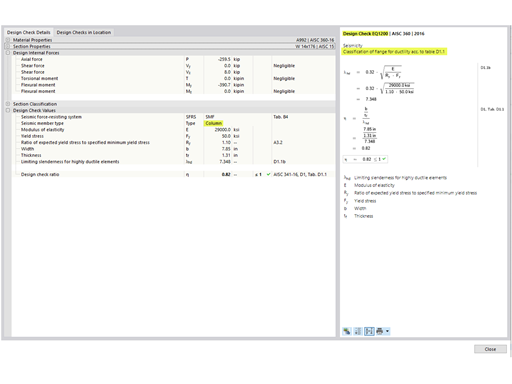
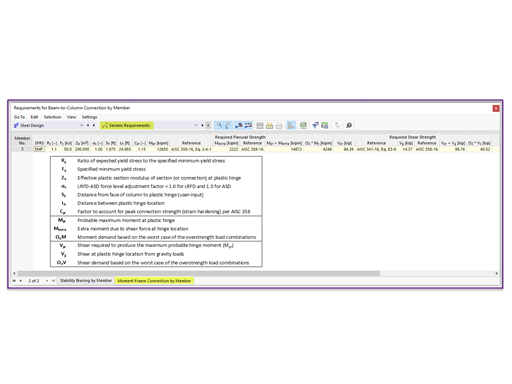











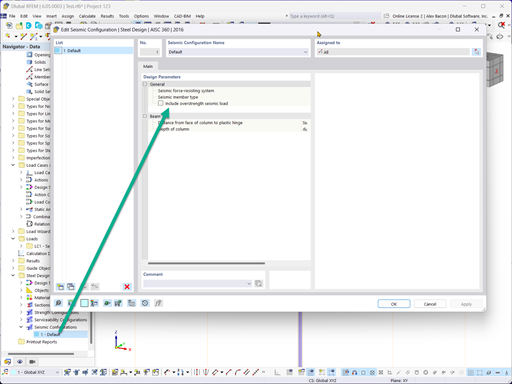







.png?mw=600&hash=49b6a289915d28aa461360f7308b092631b1446e)










